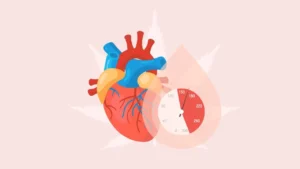ACE inhibitors are powerful medications that effectively reduce blood pressure by blocking the action of angiotensin-converting enzyme (ACE). This enzyme normally produces angiotensin II, a hormone that constricts blood vessels and increases blood pressure. By preventing the formation of angiotensin II, ACE inhibitors allow blood vessels to relax and widen, which lowers blood pressure and reduces the workload on the heart.
These medications also decrease the production of aldosterone, a hormone that causes the body to retain sodium and water. With less aldosterone, the body excretes more sodium and water, reducing blood volume and further lowering blood pressure. This dual mechanism makes ACE inhibitors highly effective for treating hypertension and other cardiovascular conditions.
ACE inhibitors have revolutionized hypertension treatment since their introduction in the 1980s. They’re often prescribed as first-line therapy for high blood pressure, especially for patients with diabetes or heart failure, due to their additional protective effects on the kidneys and heart.
Understanding ACE Inhibitors and Their Mechanism of Action
ACE inhibitors function through precise biochemical interactions that interrupt the body’s response to blood pressure medicines. blood pressure regulation system. These medications specifically target angiotensin-converting enzyme, preventing the formation of compounds that constrict blood vessels.
Role of Angiotensin-Converting Enzyme in Blood Pressure Regulation
Angiotensin-converting enzyme (ACE) plays a crucial role in the renin-angiotensin-aldosterone system (RAAS), which regulates blood pressure. This enzyme converts angiotensin I to angiotensin II, a potent vasoconstrictor that narrows blood vessels.
When blood vessels constrict, resistance to blood flow increases, resulting in elevated blood pressure. Angiotensin II also stimulates the release of aldosterone from the adrenal glands, causing sodium and water retention.
The process begins with the release of renin from specialized kidney cells in response to decreased blood pressure or reduced sodium levels, which is crucial for the action of angiotensin-converting enzyme inhibitors. Renin converts angiotensinogen to angiotensin I, which is then transformed by ACE into angiotensin II.
Under normal conditions, this system helps maintain adequate blood pressure. However, in hypertensive states, excessive activation of this pathway contributes to persistently high blood pressure.
How ACE Inhibitors Block the Renin-Angiotensin System
ACE inhibitors work by binding to the active site of angiotensin-converting enzyme. This binding prevents the conversion of angiotensin I to angiotensin II, effectively blocking a key step in the RAAS pathway.
By reducing angiotensin II production, these medications decrease vasoconstriction, allowing blood vessels to dilate, a key action of both ACE inhibitors and angiotensin receptor blockers. This vasodilation reduces resistance to blood flow, leading to lower blood pressure.
ACE inhibitors also decrease aldosterone secretion, which reduces sodium and water retention in the kidneys, enhancing their ability to treat high blood pressure. This dual action—vasodilation plus reduced fluid volume—contributes to the drugs’ antihypertensive effect.
Common ACE inhibitors include:
- Lisinopril
- Enalapril
- Ramipril is one of the commonly prescribed angiotensin-converting enzyme inhibitors for patients who need to treat high blood pressure.
- Captopril
These medications feature different chemical structures but share the same fundamental mechanism of blocking the angiotensin-converting enzyme.
The Effect of ACE Inhibition on Kidney Function
ACE inhibitors significantly impact kidney function by altering blood flow patterns within the nephrons. By reducing angiotensin II levels, these drugs, which include ACE inhibitors and ARBs, dilate both the afferent and efferent arterioles of the kidney.
This dilation particularly affects the efferent arteriole, which decreases glomerular filtration pressure. The reduction in filtration pressure helps protect kidney structures from damage in conditions like diabetes and chronic hypertension.
ACE inhibitors also decrease protein excretion in the urine (proteinuria), a marker of kidney damage. This renoprotective effect makes them valuable for treating patients with kidney disease or diabetes.
In patients with chronic kidney disease, these medications can slow disease progression by reducing intraglomerular pressure and decreasing the workload on remaining functional nephrons.
Clinical Benefits and Uses of ACE Inhibitors
ACE inhibitors represent one of the most versatile classes of cardiovascular medications, with proven benefits across multiple disease states. These medications effectively reduce morbidity and mortality in various patient populations by targeting the renin-angiotensin-aldosterone system.
Treatment and Management of Hypertension
ACE inhibitors are first-line agents for treating hypertension due to their efficacy and favorable side effect profile. They decrease blood pressure by reducing angiotensin II formation and aldosterone secretion, leading to vasodilation and decreased sodium retention.
Clinical studies demonstrate that ACE inhibitors typically reduce systolic blood pressure by 8-12 mmHg and diastolic pressure by 5-8 mmHg in patients with mild to moderate hypertension. These medications are particularly effective in specific populations, including diabetic patients, African Americans (when combined with diuretics), and those with left ventricular hypertrophy.
ACE inhibitors can be used as monotherapy or in combination with other antihypertensives such as diuretics or calcium channel blockers. Common options include lisinopril (10-40 mg daily), enalapril (5-40 mg daily), and ramipril (2.5-20 mg daily).
ACE Inhibitors in Heart Failure and Cardiovascular Disease
ACE inhibitors significantly improve outcomes in heart failure with reduced ejection fraction (HFrEF), decreasing mortality by approximately 20-25% in major clinical trials. They reduce afterload, preload, and cardiac remodeling, thereby improving cardiac output and exercise tolerance, which is beneficial for patients on ACE inhibitors and ARBs.
The SOLVD, CONSENSUS, and SAVE trials established ACE inhibitors as standard therapy for post-myocardial infarction care, especially in patients with left ventricular dysfunction. Treatment typically begins with low doses that are gradually increased to target doses as tolerated.
ACE inhibitors also demonstrate cardioprotective effects beyond blood pressure reduction, including:
- Decreased myocardial oxygen demand
- Improved endothelial function
- Reduced atherosclerotic plaque progression
- Prevention of ventricular remodeling after myocardial infarction
These medications are essential components of guideline-directed medical therapy for coronary artery disease and post-stroke management.
Renoprotective Effects and Use in Kidney Disease
ACE inhibitors exert substantial renoprotective effects, particularly in patients with diabetic nephropathy and chronic kidney disease. They reduce intraglomerular pressure by dilating efferent arterioles more than afferent arterioles, a mechanism shared by angiotensin receptor blockers.
These medications decrease proteinuria by approximately 30-35% in diabetic nephropathy and slow GFR decline by about 30% compared to other blood pressure medicines. The landmark RENAAL and IDNT trials demonstrated these benefits extend beyond simple blood pressure control.
Physicians at practices like Raymond Lau Family Medicine PC (384 Grand St Front #3, New York, NY 10002, 646-885-1399) often prescribe ACE inhibitors for patients with early diabetic nephropathy or those with protein excretion exceeding 300 mg/day.
Monitoring renal function and potassium levels remains essential when using these medications, especially in patients with existing kidney impairment. A temporary increase in serum creatinine (up to 30%) after initiating therapy with angiotensin-converting enzyme inhibitors is expected and not necessarily a reason to discontinue treatment.
Adverse Effects and Considerations for ACE Inhibitor Use
While ACE inhibitors effectively reduce blood pressure, they come with specific side effects and important considerations that both healthcare providers and patients should understand. Proper monitoring and awareness of potential reactions can help maximize benefits while minimizing risks.
Common Side Effects of ACE Inhibitors
Persistent dry cough is perhaps the most recognizable side effect of ACE inhibitors, affecting 5-35% of patients. This cough results from increased bradykinin levels in the lungs and often leads to medication discontinuation.
Angioedema, though rare (0.1-0.7% of patients), presents a serious concern with swelling of the face, lips, tongue, and airways that may require emergency intervention. This reaction typically occurs within the first week of treatment.
First-dose hypotension can occur, particularly in volume-depleted patients. This sudden drop in blood pressure may cause dizziness, lightheadedness, or even syncope. The risk increases in patients taking diuretics or following sodium restriction.
Hyperkalemia (high potassium levels) develops in some patients as ACE inhibitors decrease aldosterone production. This side effect requires particular attention in patients with kidney impairment or those taking potassium supplements.
Potential Impact on Blood Pressure Response
Individual responses to ACE inhibitors vary significantly based on several factors. Patients with high renin levels typically experience more substantial blood pressure reductions with angiotensin-converting enzyme inhibitors than those with normal or low renin states.
Elderly patients and those with renal artery stenosis may exhibit exaggerated hypotensive responses. Close monitoring during initiation and dose adjustments is essential for these populations.
Salt intake significantly influences ACE inhibitor efficacy. High sodium consumption can blunt the blood pressure-lowering effects, while sodium restriction enhances their potency.
Factors affecting blood pressure response:
- Baseline renin-angiotensin system activity
- Salt and water status
- Concurrent medications
- Age and kidney function
- Genetic variations affecting drug metabolism
Interactions with Other Medications
NSAIDs can reduce the antihypertensive efficacy of ACE inhibitors by inhibiting prostaglandin synthesis, which is crucial for the effectiveness of angiotensin-converting enzyme inhibitors. This interaction may lead to inadequate blood pressure control and increased risk of kidney dysfunction when using blood pressure medicines.
Potassium-sparing diuretics and potassium supplements combined with ACE inhibitors increase hyperkalemia risk. Regular monitoring of serum potassium levels becomes crucial when these medications are used together.
Lithium levels may rise when taken with ACE inhibitors due to decreased lithium excretion. This combination requires careful monitoring of lithium concentrations to prevent toxicity.
Antidiabetic medicines may have enhanced effects when combined with ACE inhibitors. Patients with diabetes might need adjustment of their hypoglycemic medication dosages as improved insulin sensitivity can occur with ACE inhibitor therapy.
Frequently Asked Questions
Below are answers to common questions about ACE inhibitors, their mechanisms, side effects, and related medications, including angiotensin receptor blockers. These address important clinical considerations for patients and healthcare providers.
What are the common side effects of taking ACE inhibitors?
Common side effects include persistent dry cough, dizziness, headache, fatigue, elevated potassium levels, and in rare cases, angioedema.
Can you explain the mechanism of action for ACE inhibitors?
ACE inhibitors block the conversion of angiotensin I to angiotensin II, reducing vasoconstriction and aldosterone production, which lowers blood pressure.
Which medications are classified as ACE inhibitors?
ACE inhibitors include enalapril, lisinopril, captopril, ramipril, benazepril, fosinopril, quinapril, perindopril, and moexipril.
What are some examples of ACE inhibitors prescribed for hypertension?
Lisinopril, enalapril, and ramipril are among the most commonly prescribed ACE inhibitors for treating hypertension.
What are the contraindications for using ACE inhibitors in treatment?
Contraindications include pregnancy, history of angioedema, bilateral renal artery stenosis, hyperkalemia, and severe renal impairment.
Does losartan function as an ACE inhibitor or under a different classification?
Losartan is an angiotensin II receptor blocker (ARB), not an ACE inhibitor, working by blocking angiotensin II receptors rather than inhibiting ACE.







